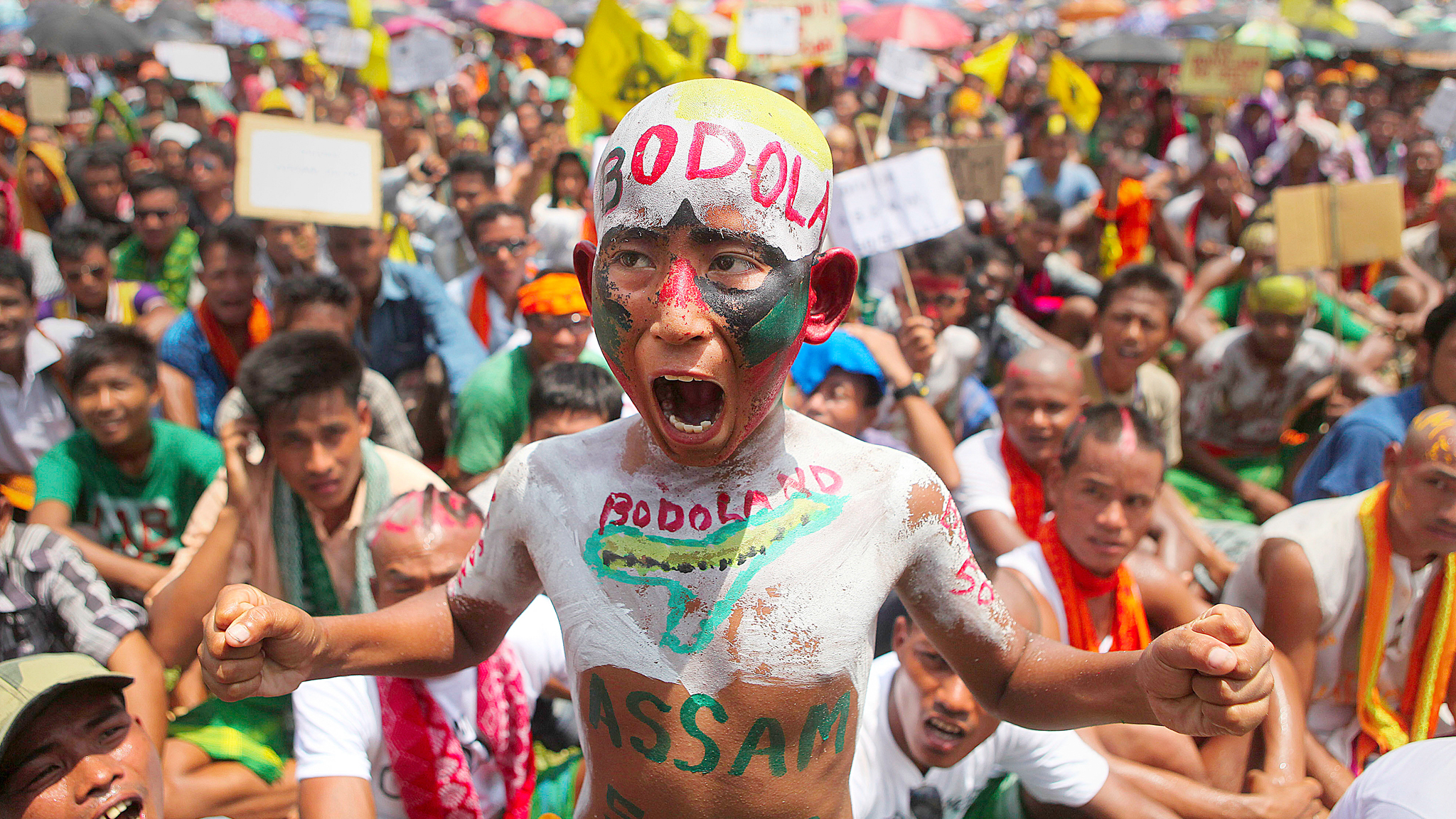As we move forward to cover up Internal Security topics, we should have look for North-eastern region. So, we will see various linkages between developments and demands from North-eastern region. Let’s know Assam Riots and Bodoland demand in brief!
Let’s know historical timeline of events?
- In 1960s, Bodos started demanding autonomy, varying from separate statehood to outright sovereign status.
- In 1980s and 1990s, militant Bodo movement peaked during this period large scale killings and human displacement.
- In 2003, the signing of the Bodo Territorial Council (BTC) Accord between Militant Bodo Liberation Tigers (BLT) led by leadership of Hagrama Mohilary on one side and Centre-state government on the other side.
- Under this accord, Bodo Liberation Tigers surrendered their weapons, and Hagrama was made the Chief Executive Member (CEM) of the Bodo Territorial council (BTC).
- Nowadays, violence in bodoland is become a common feature in region.
- In past 5 years some 3,500 riots have been reported, most recent being the December 2014 Violence by NDFB (songbijit) against adivasis and retaliatory violence.

Then, what comprises BTC or Bodo Accord?
- In 2003 – Bodo militants lay down the arms and want to join mainstream and they signed agreement with Government, known as “Bodo Accord”.
- A Bodoland Territorial Council (BTC) created under 6TH Schedule of the Constitution has been given legislative powers over 40 subjects.
- Bodoland or Bodoland Territorial Areas District (BTAD) created in 2003.
It consists of 4 districts of Assam –
- Kokrajhar
- Chirang
- Baksa
- Udalguri. (Total 35% area of Assam.)
[ Demography of bodoland: 30 % of the population is Bodos (who are STs) and rest comprises of tribals, Bengali Muslims and Hindus and Assamese.]
Why were there resentment outbreaks among Bodos and Non Bodos?
Bodos side’s demands –
- The Bodos, constitute the largest tribal community out of a total of 34 tribal communities in Assam.
- They feel they have been neglected, exploited and discriminated against for decades, look at this accord as a historic opportunity to fulfil their longstanding demands.
- But due to the changing demographics of the BTAD and the consequent land alienation, they fear they may become a minority in their own state and in hitherto Bodo-dominated areas.
Non-Bodos and Muslims side’s demands –
- They resents the fact that Bodos constitute a meagre 25 per cent of the total population in the BTC area and believe that Bodos should not be given the right to rule over the other three-fourths.
- Number of villages with minority Bodo population were included in the BTAD to make it a contiguous area.
- The non-Bodos want such villages to be taken out of BTAD so that they do not feel insecure where they are clearly in the majority.
So, was there any problem in the Bodo Accord?
- The Bodo Accord, seeks to protect the land rights of the indigenous Bodos while allowing settler Muslims (both legal and illegal) to freely acquire land at the same time.
- The Bangladeshi migrants easily sneak in the area, illegally procure relevant documents like ration cards to establish Indian nationality.
- Taking advantage of the provisions in the BTC Act, such migrants are freely procuring land in the BTAD, which only adds to the woes of indigenous Bodos.
- Both sides are demanding the review / revocation of BTC act because on one hand, Bodos feel their rights are not protected.
- On the other hand, Non-bodos feel that Bodos are getting way too many benefits.
Are there some concrete reason behind violence?
- Demand for a separate state of bodoland.
- Occupation of their land by illegal Bangladeshi migrants.
- Illegal migration from Bangladesh who have settled on their land (loss of land rights).
Adivasis demand to be included in ST list –
- They argue that 34 of the 40 seats of BTC are reserved for STs. Now bodos having ST status dominates it, although they are only 34% of population.
- This is opposed by Bodos who don’t want to lose power.
Can we have some solutions on a table?
Security measures
- Have permanent security forces here.
- Intensify operations against the militants.
- Curb the proliferation of illegal weapons.
- Seek amicable and strategic cooperation from Bhutan and Bangladesh.
Solve underlying reasons
- Stop illegal migration and update land records – [e.g. National Population Register, Aadhaar / similar biometric cards.]
- Ensure equal rights and opportunities to all socio-religious and ethnic communities in the area.
- If need arises then review the BTAD model, where the minority Bodos rule over the majority non-Bodos.
Way forward
Union and State Government need to solve it en masse and take proactive action against violence in this conflict region, unless proactive action with political will of leaders in region should come into action, there is no way out for hope to resettle from such domino effect.
Have a look to Domino effect happened all over the country following the spirit for statehood.
What do you think on domino effect and spirit of statehood? Let us know!
Published with inputs from Arun | Image: BTAD


